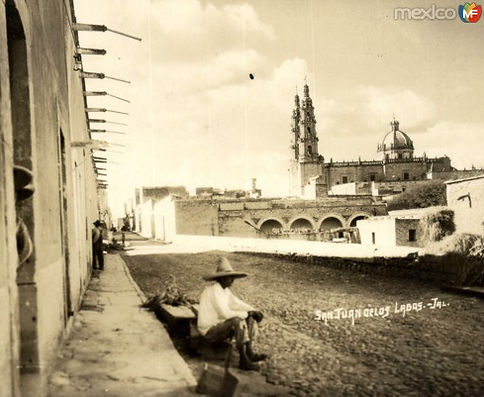"History San Juan"
It was first conquered by the Spanish captain Pedro Almíndez Chirinos, when mandated by Nuño Beltrán de Guzmán in 1530 had left Cuitzeo.
In 1530 Captain Cristobal de Oñate, after dominated caxcanes Teocaltiche acknowledged the peoples of eastern Jalisco, including the area where San Juan de los Lagos is located, are subject to the Spanish power.
Before the destruction left in its wake many indigenous company conquering the region abandoned their populations to take refuge in the mountains and resisting foreign domination. That was how the seat tecuexe manor, located in the chiefdom Mezquititlán, was practically deserted.
According relates in his "San Juan de los Lagos Front to its History", teacher and writer sanjuanense Remberto Hernández Padilla; around 1543, which ended the War of Mixtón Franciscans were devoted to repopulate the ancient Indian villages and to establish populations. It was so with Indians Nochistlán Jalostotitlán refounded in 1544; then the people of Tlasintla (now St. Gaspar); later it was the turn of the hamlet of Mezquititlán tecuexes and the handful of living there and added them catechized indigenous San Gaspar. So in late 1544, Fray Miguel de Bologna, was given the task of repopulating Mezquitatlán was called San Juan Bautista de Mezquititlán.
By the end of the sixteenth century there was a group of huts natural that had a small chapel where is the population today. In the chapel, indigenous evangelized and rustically kept an image of the Virgin whose origin is the cause of controversy, since some chroniclers and historians claim that was given to the Indians by Friar Antonio de Segovia others claim it was Fray Miguel de Bologna who brought the image of the Virgin to repopulate the village of Mezquititlán.
This discrepancy dating from the colonial era and therefore in the Sancta Misceláneade Recap Xalisco Province, mid-seventeenth century, the Franciscan chronicler Fray Antonio Tello referring to the origin and miracles of the image of Our Lady of San Juan points out, based the testimony of a native of the place, the picture was given to the town by a Franciscan friar; Tello says about ".. gave news that Fray Antonio de Segovia gave the said town that image but did not name him, but having given, he said, a religious of our Father San Francisco, and is presumed to be the said Father Fray Antonio de Segovia, who was the apostle WITH THESE nations, or father Fray Miguel de Bologna, which was the first keeper Xuchipilan, the qual administered from there Tecualtiche valleys and Nochistlán ... "
On this topic, Professor Hernández Padilla concluded after its investigation that the image was donated to the rising populated by Fray Miguel de Bologna.
The warlike chichimecas harassed continuously to new residents. It was not until 1633 when the Royal Audiencia of Guadalajara that the Spaniards, Creoles and mestizos were allowed, to settle in San Juan Bautista de Mezquititlán, as it was known. In that year he also started calling town of San Juan de los Lagos, because politically dependent population of St. Mary of the Lakes.
King Charles IV issued a royal decree in 1797 granting to the town of San Juan "the privilege of a free life entirely frank and straight annual fair, sales tax, excise and tolls."
For the town crossed the road that went to Tampico for San Luis Potosi and Zacatecas, Mexico entroncaba with that - Santa Fe Santa Maria de los Lagos.
In the decree of March 27, 1824, San Juan de los Lagos, was established in the Department being head of it and understood the municipalities of the town of Encarnación, of Jalostotitlán and San Miguel el Alto. In the same article he was awarded the title of town of San Juan de los Lagos, that his character was head of department and City Hall.
By Decree No. 161 adopted on October 30, 1869, and published on November 3 thereof; was granted to the town of San Juan de los Lagos city title.


